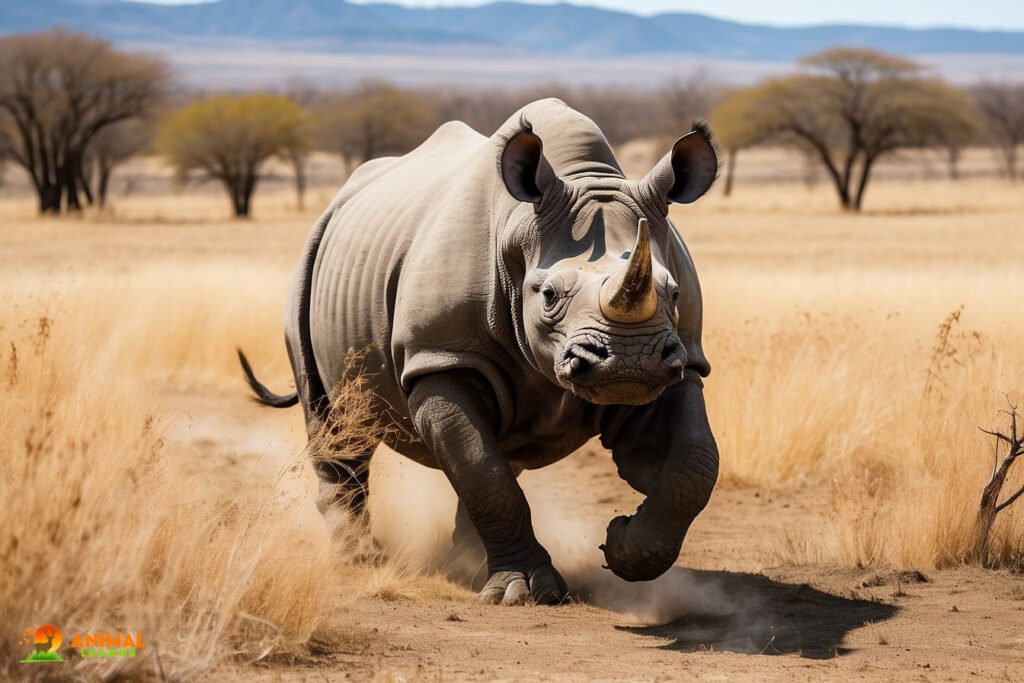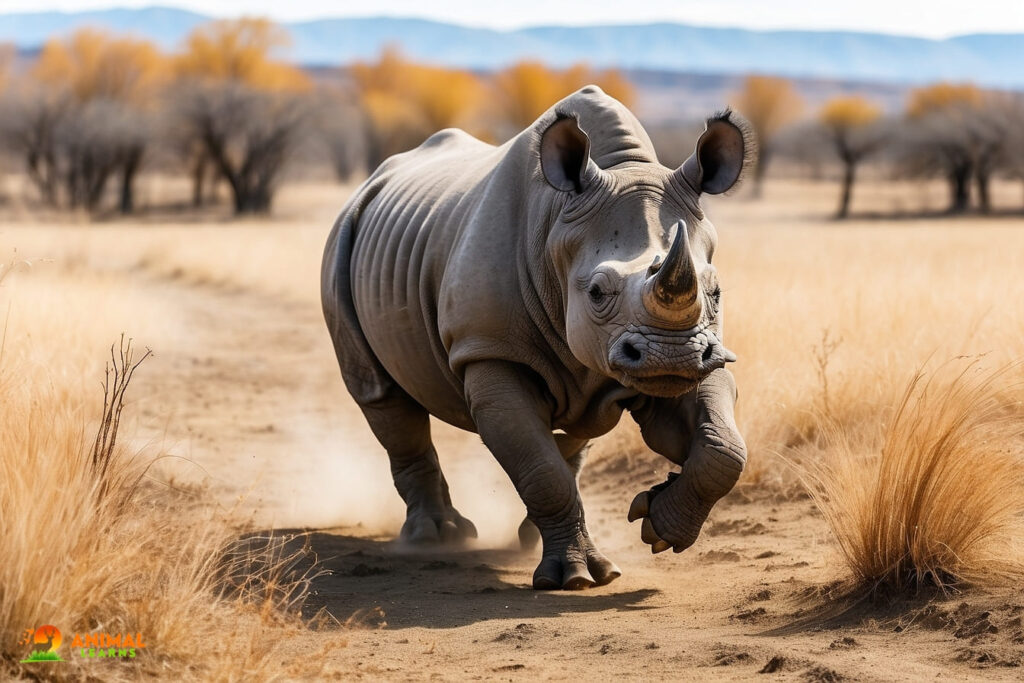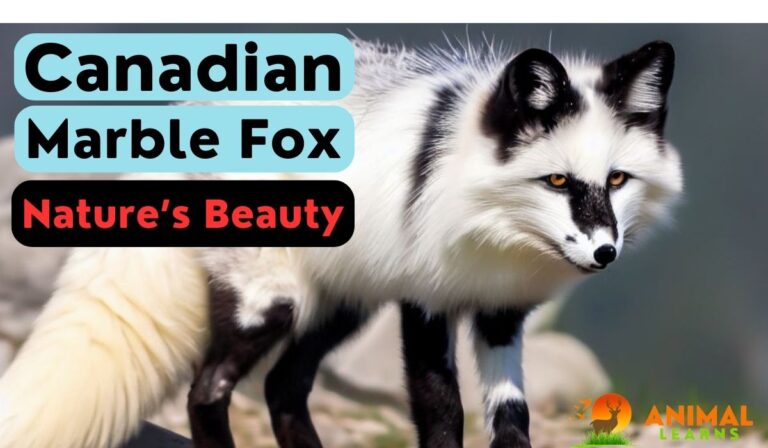Black Rhinoceros: Types and Interesting Facts

| Characteristic | Information |
|---|---|
| Scientific Name | Diceros bicornis |
| Size | Shoulder height: 1.4 – 1.8 meters (4.6 – 5.9 feet) |
| Weight | Adult weight: 800 – 1,400 kilograms (1,763 – 3,086 pounds) |
| Location | Native to various African countries including South Africa, Zimbabwe, Namibia, Kenya, and Tanzania. |
| Social Structure | Solitary, with occasional brief interactions for mating or calf care. |
| Running Speed | Capable of reaching speeds up to 34 miles per hour. |
The Black Rhinoceros has a prehensile upper lip for browsing leaves and branches. It’s robust, solitary, and varies in color from dark grey to brown. These agile runners can reach speeds of up to 34 mph. They’re solitary, except during mating and calf care.
Sadly, they face the significant challenge of poaching for their valuable horns, making conservation efforts vital to their preservation. Black Rhinos symbolize Africa’s natural beauty and the urgent need for wildlife protection.
The appearance
Contents

Diceros bicornis, the Black Rhinoceros, is an amazing animal with a unique look. Its thick, folded skin, which might be gray or black, gives it an armored, tough look. On their snout, black rhinos have two pointed horns, with the front horn being longer than the rear.
They have comparatively short legs and a large, barrel-shaped torso. Despite its moniker, Black Rhinos’ colors can range from gray to brown based on their skin type and geographic area.
Black Rhinoceros Characteristics

- Solitary and territorial nature
- Thick, folded gray or black skin
- Two pointed horns on the snout
- Front horn longer than the rear horn
- Massive and barrel-shaped body
- Relatively short legs
- Pointed upper lip, prehensile for grasping vegetation
- Excellent sense of smell and hearing
- Poor eyesight
- Can weigh up to 1,400 kilograms (3,100 pounds)
- Shoulder height of around 1.5 meters (5 feet)
- Aggressive when threatened
- Known to be browsers, feeding on leaves, twigs, and fruits
- Able to consume over 200 different plant species
- Native to Africa, with populations in eastern and southern regions
Diet
Being herbivores, black rhinos mostly consume a range of plant materials in their diet. They are reported to eat more than 200 different plant species and graze on leaves, twigs, branches, and fruits. Their environment and the amount of flora that grows there mostly dictate what they eat.
Unlike their white rhino relatives, which are grazers, these rhinos are browsers because of their prehensile lip, which enables them to remove leaves and branches from trees and plants.
Habitat and distribution
Native to Africa, black rhinoceroses may be found in a variety of environments, including savannas, grasslands, deep woods, and swamps. With populations in nations including Kenya, Namibia, South Africa, Zimbabwe, and Tanzania, they are mostly found in eastern and southern Africa.
Unfortunately, their original range has been greatly reduced by habitat loss and poaching, and they are now mostly restricted to protected areas.
Behavior and lifestyle
Black rhinos are mostly solitary creatures that mark and protect their own area, which varies in size according on population density and food availability. Compared to other rhino species, they are considered to be more aggressive and frequently respond defensively when challenged or threatened.
The existence of other rhinos or animals in their domain may have an impact on their behavior. Even though they prefer to live alone, they could put up with other rhinos around water holes or during mating season.
Adaptations

To thrive in their many environments, black rhinoceroses have evolved a number of adaptations. They can access plants that other herbivores cannot because of their prehensile lip.
They can identify predators and food sources thanks to their excellent sense of hearing and smell, which makes up for their relatively low vision.
Their protective, folded skin shields them from bug attacks and prickly vegetation. Their nose has two horns that are used for both defense and environment manipulation.
Types
South-central Black Rhinoceros
The southern and eastern parts of Africa, which include nations like Zimbabwe, Mozambique, and South Africa, are home to this subspecies.
Black rhinos from the South Central region are comparatively tiny and use their hooked upper lip to browse on leaves and trees.
South-western Black Rhinoceros
The southwestern parts of Africa, particularly Namibia and the southern portion of Angola, are home to this subspecies.
Black rhinos in the southwest are renowned for having a physiological adaptation that enables them to flourish in dry and desert conditions.
East African Black Rhinoceros (Diceros bicornis michaeli)
Kenya and Tanzania are among the easternmost countries on the continent where East African Black Rhinoceros can be found.
They are adaptable to a range of environments, including forests and savannas, and grow somewhat huge.
West African Black Rhinoceros
In the past, this subspecies was present in western Africa, which includes nations like Cameroon and Chad. Though there have been very few recent sightings, it is still classified as severely endangered, and some people even think it may be extinct.
The unique environment of West African black rhinos, which comprised woods and rainforests, allowed them to adapt.
Black Rhinoceros Interesting Facts

- Black Rhinos are known for their unpredictable and sometimes aggressive behavior.
- They have poor eyesight but possess a keen sense of smell and hearing.
- Despite their name, Black Rhinos can vary in color, from dark grey to brown.
- These rhinos are agile and can run at speeds of up to 34 miles per hour.
- Black Rhinos are primarily solitary animals, except during mating or when a mother cares for her calf.
- They have well-defined home ranges and are territorial, often defending their territories aggressively.
- Male Black Rhinos may compete for the attention of females during the breeding season.
- The gestation period for Black Rhinos is approximately 15 months, and they typically give birth to a single calf.
- Their populations faced a significant decline due to poaching for their horns, but conservation efforts have led to a slow increase in numbers.
- They are one of the most iconic and endangered species on the African continent, highlighting the importance of conservation efforts.
Population
Over time, poaching for their horns has resulted in a notable fall in the Black Rhinoceros population. By the early 1990s, there were less than 2,500 Black Rhinos left in the wild, down from an estimated 70,000 in the 1960s.
Their population has gradually increased as a result of conservation measures; as of 2022, there were around 5,500 individuals, and the number is still slowly rising.
Social systems
Black rhinos are renowned for their territorial nature and are usually solitary creatures. Their home ranges are clearly delineated, and they have a reputation for being fierce defenders of their areas.
Males can overlap many females’ ranges because they are quite territorial. Male Black rhinos may search for females during the mating season, although these encounters are usually short and violent.
Predators
Natural predators of adult Black rhinoceroses are uncommon because of their size and powerful horns. But newborn calves may be easily preyed upon by hyenas, lions, and sometimes even crocodiles. However, poachers who target them for their precious horns continue to be the major danger to black rhinos.
Mating
The mating rituals of black rhinoceroses are renowned for being quick but occasionally violent. A male will pursue a female who is receptive, frequently repelling other males in the process.
The female may mate with several males during her estrus cycle, and copulation is short. A single calf is usually born to Black Rhinos throughout their approximately 15-month gestation period.
Diseases
Black rhinoceroses are prone to a number of maladies, such as parasite infections and diseases carried by ticks. They may be more susceptible to health problems in captivity as a result of their poor nutrition and inactivity.
Diseases may also weaken individuals and increase their susceptibility to poaching, which can have serious effects on wild populations.
Challenges faced

Poaching for their horns—which are highly prized in certain traditional remedies and for use as ornaments—is the most serious threat black rhinoceroses face. They are also threatened by conflicts between humans and wildlife and habitat degradation.
Governments and groups are still working to safeguard these amazing species and maintain their habitats and populations, which is why conservation efforts are so important.
FAQs
What is the current population of Black Rhinoceros?
There are approximately 5,500 Black Rhinoceros in the wild, with numbers gradually increasing due to conservation efforts.
Why are Black Rhinos endangered?
The primary threat to Black Rhinos is poaching for their valuable horns, which are illegally traded in some regions.
Are Black Rhinos aggressive?
Black Rhinos can exhibit aggressive behavior, particularly when defending their territories, but they are generally solitary and avoid conflict when possible.
What is the diet of Black Rhinoceros?
Black Rhinos are herbivores and primarily browse on leaves, branches, and other vegetation using their prehensile upper lip.
How do Black Rhinos contribute to ecosystems?
Black Rhinoceros play a role in shaping ecosystems through their browsing activities, influencing plant diversity and growth. They also help create water holes that benefit other wildlife.












